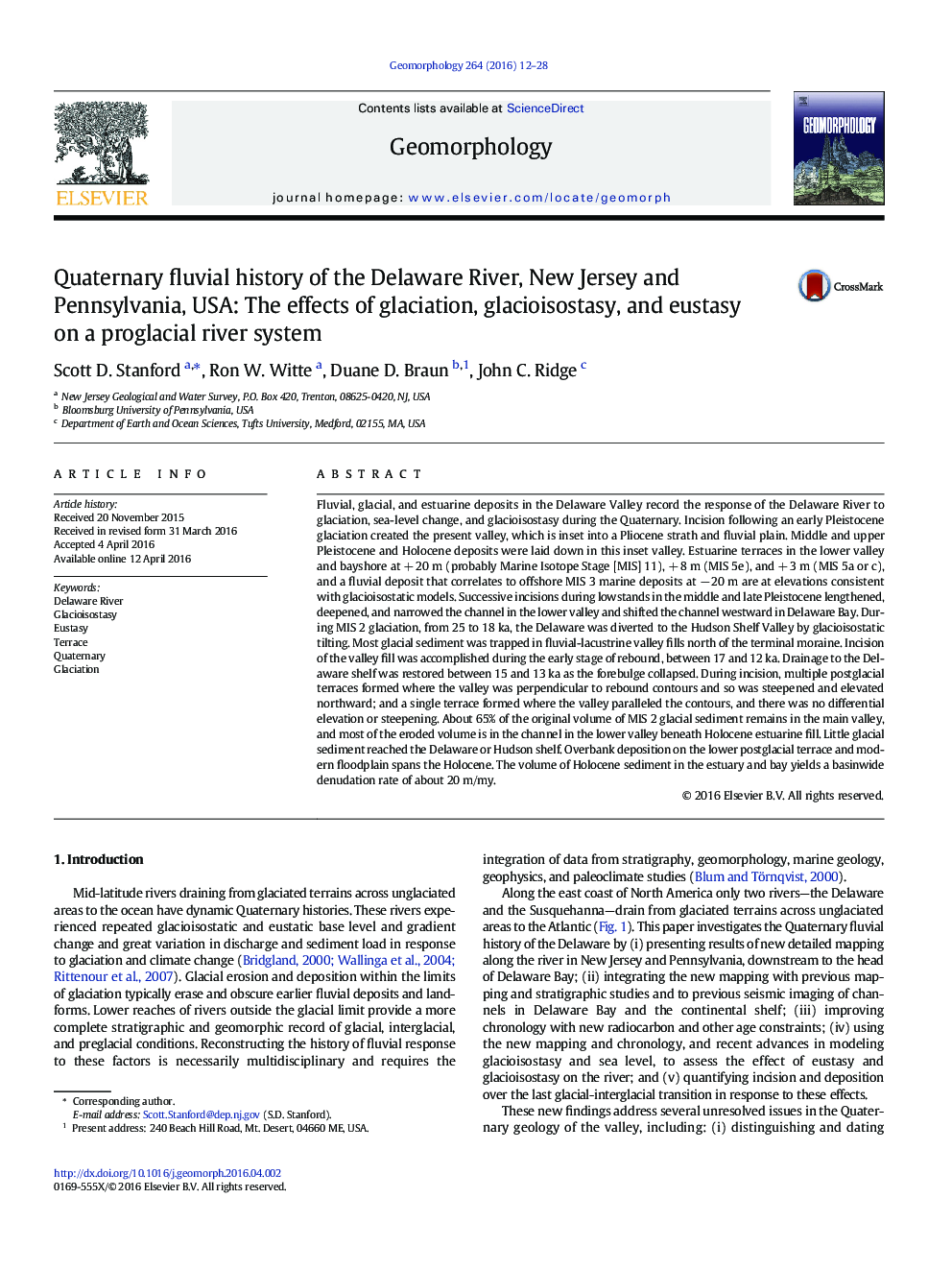| کد مقاله | کد نشریه | سال انتشار | مقاله انگلیسی | نسخه تمام متن |
|---|---|---|---|---|
| 6431601 | 1635385 | 2016 | 17 صفحه PDF | دانلود رایگان |

Fluvial, glacial, and estuarine deposits in the Delaware Valley record the response of the Delaware River to glaciation, sea-level change, and glacioisostasy during the Quaternary. Incision following an early Pleistocene glaciation created the present valley, which is inset into a Pliocene strath and fluvial plain. Middle and upper Pleistocene and Holocene deposits were laid down in this inset valley. Estuarine terraces in the lower valley and bayshore at + 20 m (probably Marine Isotope Stage [MIS] 11), + 8 m (MIS 5e), and + 3 m (MIS 5a or c), and a fluvial deposit that correlates to offshore MIS 3 marine deposits at â 20 m are at elevations consistent with glacioisostatic models. Successive incisions during lowstands in the middle and late Pleistocene lengthened, deepened, and narrowed the channel in the lower valley and shifted the channel westward in Delaware Bay. During MIS 2 glaciation, from 25 to 18 ka, the Delaware was diverted to the Hudson Shelf Valley by glacioisostatic tilting. Most glacial sediment was trapped in fluvial-lacustrine valley fills north of the terminal moraine. Incision of the valley fill was accomplished during the early stage of rebound, between 17 and 12 ka. Drainage to the Delaware shelf was restored between 15 and 13 ka as the forebulge collapsed. During incision, multiple postglacial terraces formed where the valley was perpendicular to rebound contours and so was steepened and elevated northward; and a single terrace formed where the valley paralleled the contours, and there was no differential elevation or steepening. About 65% of the original volume of MIS 2 glacial sediment remains in the main valley, and most of the eroded volume is in the channel in the lower valley beneath Holocene estuarine fill. Little glacial sediment reached the Delaware or Hudson shelf. Overbank deposition on the lower postglacial terrace and modern floodplain spans the Holocene. The volume of Holocene sediment in the estuary and bay yields a basinwide denudation rate of about 20 m/my.
Journal: Geomorphology - Volume 264, 1 July 2016, Pages 12-28